This article needs additional citations for verification .(December 2019) |

(date unknown)
![The Palace of Count Villagonzalo [es] Palacio del conde de Villagonzalo 02.jpg](http://upload.wikimedia.org/wikipedia/commons/thumb/d/df/Palacio_del_conde_de_Villagonzalo_02.jpg/300px-Palacio_del_conde_de_Villagonzalo_02.jpg)
Juan de Madrazo y Kuntz (1829, Madrid - 7 March 1880, Madrid) was a Spanish architect and restoration expert.
This article needs additional citations for verification .(December 2019) |

![The Palace of Count Villagonzalo [es] Palacio del conde de Villagonzalo 02.jpg](http://upload.wikimedia.org/wikipedia/commons/thumb/d/df/Palacio_del_conde_de_Villagonzalo_02.jpg/300px-Palacio_del_conde_de_Villagonzalo_02.jpg)
Juan de Madrazo y Kuntz (1829, Madrid - 7 March 1880, Madrid) was a Spanish architect and restoration expert.
He came from a family of illustrious painters. His father was the portrait painter, José Madrazo. His brothers were the painters Federico de Madrazo and Luis de Madrazo. In what may have been an effort to stand out, he chose architecture over painting; becoming an apprentice at the Palacio Real de Madrid; under the direction of Domingo Lafuente, the official Palace Architect. He remained with Lafuente until, in 1846, he was able to become a student at the recently established School of Architecture.
After obtaining his degree in 1852, he held a Chair at the "School of Construction Masters" in Valencia, where he taught composition and legal issues. In 1854, he returned to Madrid. There, he wrote a book on surveying and began another on popular architecture. In 1855, he became involved in an ambitious project to renovate the Puerta del Sol, but it never came to fruition.
He was one of the few architects in Madrid who designed buildings in the International Style, as developed by the French architect, Eugène Viollet-le-Duc. Many restoration projects were placed under his direction; perhaps the best known being the exterior decorations on the Church of Las Calatravas. [1] He performed similar work on the León Cathedral, for which he was posthumously awarded a medal of honor at the National Exhibition of Fine Arts in 1881.
He died of a sudden, severe illness in 1880, at the age of fifty-one. His career was relatively short, so few examples of his original designs are in existence.

Federico de Madrazo y Kuntz was a Spanish painter.

Raimundo de Madrazo y Garreta was a Spanish painter from the Madrazo family of artists who worked in the Realistic style, although his later work shows signs of Rococo and Japanese influence. He was known primarily for his genre paintings and portraits. His grandfather was José de Madrazo, his father was the portrait painter Federico de Madrazo and his brother was Ricardo de Madrazo.
Madrazo is a Spanish surname and sometimes uses as "Maderazo" in the Philippines and US:
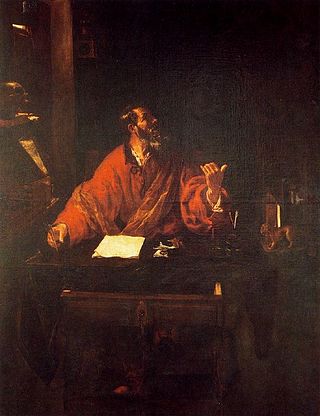
Juan Ribalta was a Spanish painter of the Baroque period. He was born and died in Valencia. His father, Francisco Ribalta, was a famous painter, active in the style of Caravaggio. Some sources said he was born in Madrid and later moved to Valencia. His mother Inés Pelayo died in 1601. Juan's works and style are similar to that of his father. He later painted Saint Sebastian at the Valencia Cathedral in 1616, later the small Adoration of the Shepherds and St. Peter, he also painted portraits including the poet Gaspar de Aguilar.
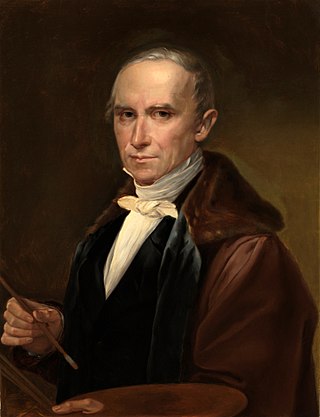
José de Madrazo y Agudo was a Spanish painter and engraver; one of the primary exponents of the Neoclassical style in Spain. He was the patriarch of a family of artists that included his sons Federico and Luis; and his grandsons, Raimundo and Ricardo.
Félix Castello or Castelo was a Spanish painter of the Baroque period.
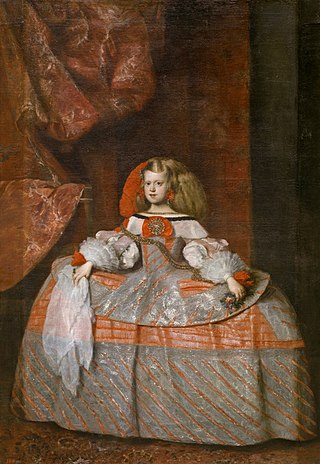
Infanta Margarita Teresa in a Pink Dress is a 1660 oil on canvas portrait of Margaret Theresa of Spain by the Spanish painter Diego Velázquez, though his identification as its author is not considered secure. It is now in the Prado Museum in Madrid.
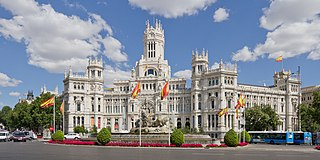
Cibeles Palace, formally known as Palacio de Comunicaciones and Palacio de Telecomunicaciones until 2011, is a complex composed of two buildings with white facades and is located in one of the historical centres of Madrid, Spain. Formerly the city's main post office and telegraph and telephone headquarters, it is now occupied by Madrid City Council, serving as the city hall, and the public cultural centre CentroCentro.

Ricardo Velázquez Bosco (1843–1923) was a Spanish architect, archaeologist and scholar.

Juan Antonio Ribera Fernandez, also Juan Antonio de Ribera was a Spanish painter.

Luis de Madrazo y Kuntz was a Spanish painter of portraits and religious scenes from a well-known family that included his father José, and his brothers Federico, Pedro and Juan. His Polish grandfather Tadeusz Kuntze was a painter as well.

The Palacio de La Moncloa before the Spanish Civil War was the original Palacio de La Moncloa before it suffered damage during the Spanish Civil War and was rebuilt into the current palace with a very different layout from the original.

The Palacio del Marqués de Alcañices, also known as Palacio de Alcañices, was a building, now disappeared, which was located in the Calle de Alcalá of Madrid on the land that was other building that occupied Luis Méndez de Haro 6th Marquis del Carpio, a favorite of Philip IV. It belonged to the parish of San Sebastián, and occupied the number 74 of the modern numbering of the street; its other façade bordering the Paseo del Prado. Was named after its owners, the last one José Osorio y Silva, mentor of Alfonso XIII, known as Pepe Osorio and the Grand Duke of Sesto, who also held the title of Marquess of Alcañices, among others.

Ricardo Federico de Madrazo y Garreta was a Spanish painter from the Madrazo family of artists, best known for his Orientalist works. He was also the brother-in-law of the great Spanish Orientalist, Mariano Fortuny, who would be a major influence on both his life and work.
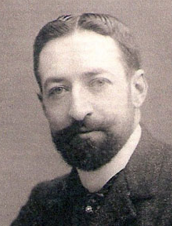
Mariano Belmás Estrada was a Spanish architect. He was a prominent theoretician of urban planning in Madrid in the late 19th century, particularly in addressing the problem of housing workers as the city modernized and its population grew. He viewed architecture in terms of technical solutions to social problems rather than aesthetics. He was the lead architect in the first year of reconstruction after the 1884 Andalusian earthquake. He was a founder and one of the first architects of the Ciudad Lineal of Madrid, a planned neighborhood. Later he abandoned his youthful idealism and became a successful and respected architect who created eclectic designs of major new buildings and renovations for public and private clients.

Pedro de Madrazo y Kuntz was a Spanish painter, jurist, writer, translator and art critic.

Cecilia de Madrazo y Garreta was a collector of textiles. She was married to the famous Spanish artist, Marià Fortuny.

Tomàs Padró i Pedret was a Catalan painter, graphic artist and illustrator.
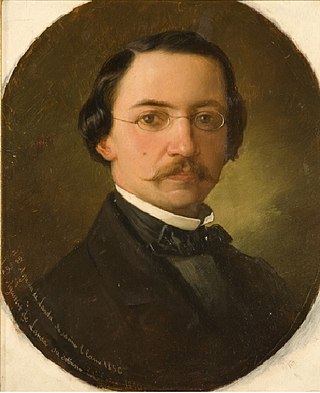
Eduardo Cano de la Peña was a Spanish painter in the Romantic style; specializing in historical scenes.

Our Lady of the Rosary is an oil on canvas painting of Our Lady of the Rosary by Bartolomé Esteban Murillo, created c. 1650-1655. It was previously in the El Escorial Monastery and Palacio Real de Madrid and now is held in the Museo del Prado, in Madrid.